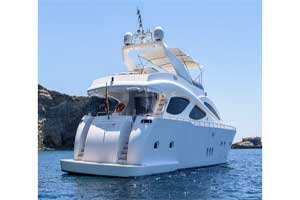Legal implications of the Letting of a Boat
Renting boats may at first instance seem the same as letting property which is part of the land, such as a house. However, the problem some landlords have faced is the determination of whether renting a boat creates a tenancy or a license.
A tenancy creates interest inland, as the courts have found, a boat cannot constitute land even where the boat is permanently moored.
The leading authority is the case of Chelsea Yacht & Boat Company Ltd. v Pope [2000] EWCA Civ 425 (06 April 2000). In this case, the boat was called “Dinty Moore”, and the Dinty Moore was secured by ropes and an anchor. Sometimes, the Dinty Moore would rest on the riverbed, and the occupant argued this made the Dinty immobile and therefore was part of the land.
Case history for renting a boat
However, the Court found that the Dinty Moore did not form part of the land which would be required for the creation of a tenancy; therefore, no tenancy could have been created. The occupant of the Dinty Moore was accordingly a licensee and not a tenant.
Lord Justice Tuckey stated:
“…the houseboat rested periodically on the riverbed below it and was secured by ropes and perhaps to an extent the services to other structures. It is difficult to see how attachments in this way to the pontoons, the anchor in the riverbed and the rings in the embankment wall could possibly make the houseboat part of the land. One is bound to ask, “Which land?” There is, in my judgment, no satisfactory answer to this question.”
Lord Justice Morritt stated:
The proper test is that laid down in Holland v Hodgson as approved in Elitestone & Morris. The Court must consider both the degree and object of annexation. The Dinty Moore is attached to the river wall and the river in the manner described by Tuckey LJ ultimately by ropes and service connections. Those ropes and services may be untied and disconnected without any undue effort to enable the Dinty Moor to be towed away by a barge.
Thus, the degree of annexation does not require recognition of the Dinty Moore a part of the land.
In a more recent case, Mew & Anor v Tristmire Ltd [2011] EWCA Civ 912 (28 July 2011), the Court had to consider whether “houseboats” formed part of the land. The houseboats, in this case, were situated on wooden platforms. The Court applied the test laid down in the case Elitestone v Morris [1997] 1 WLR 687 in which a two-fold test was established:
- What is the degree of annexation; and
- What is the purpose of the annexation?
The Court found that the houseboats did not form part of the land as they could be removed without being dismantled or destroyed. Accordingly, the occupants of the houseboats were licensees and not tenants.
In most cases where a boat is let, the boat will be let on a license agreement.
What are the risks of letting a boat?
Owners of boats need to be aware of the pitfalls and risks of renting a boat. There have been some nasty cases where owners have suffered financial loss and more.
Read the following blog which may assist you with some of the potential risks of renting a boat:
Guidance on renting a boat – Blog.
Should need advice and you are a member of the British landlords association contact our landlord helpline.
Source; Landlord Advice UK – A Leading National Tenant Eviction Company
Tel: 020 3903 2000
Date; 29th of May 2020
How to Manage the Risks of Abandoned Property for Landlords
London Chamber of Arbitration and Mediation (LCAM)
7 top tips how to evict a tenant quickly under Coronavirus





